The ‘star-fiend’ who unlocked the Universe
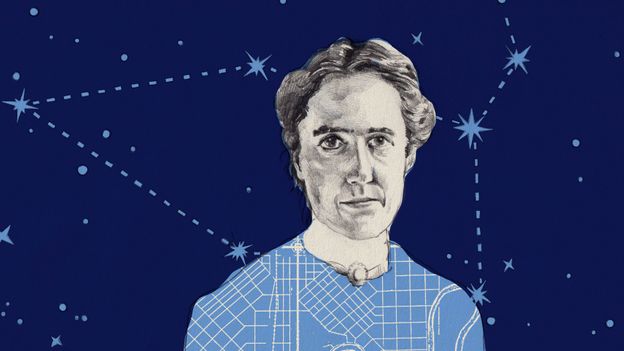
Features correspondent
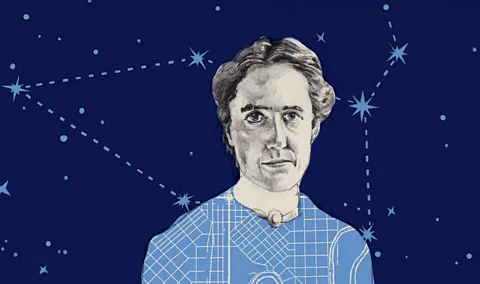 Emmanuel Lafont
Emmanuel LafontWe used to think the Milky Way was the only galaxy, but with one simple law, Henrietta Swan Leavitt changed that forever – and she didn’t even need a telescope.
A century ago, the Universe seemed like a much smaller place. Many astronomers were convinced that our home galaxy of the Milky Way made up the entirety of the cosmos. That changed in 1923 when astronomer Edwin Hubble sat at the peak of Mount Wilson in California and pointed the observatory’s telescope toward a fuzzy bright spiral in the distant night sky, the Andromeda Nebula.
Andromeda, Hubble observed, was too far away to be part of the Milky Way. It was not a nebula, but a galaxy. A spiral of a trillion stars, the Andromeda Galaxy churns about 2.5 million light years away from Earth. Hubble’s remarkable observation would not have been possible without the work of Henrietta Swan Leavitt, who did not even use a telescope.
Leavitt instead used a magnifying lens pointed – not up, but down – at a delicate glass plate fixed into a wooden frame. One side of the glass plate was coated in photographic emulsion and dotted with the ghostly imprint of thousands of stars captured on its surface. The black stars illuminated on the white surface reveal a reversal of the night sky viewed with the naked eye. This is how Leavitt experienced the Universe.
Leavitt was one of many “human computers” working at the Harvard College Observatory in the late 19th and early 20th centuries. This group, all women, discovered dozens of new novae, nebulae, and asteroids, as well as thousands of “variable stars”, which are defined by their waxing and waning brightness. Leavitt, who was once described as a “variable star-fiend”, discovered over 2,000 variable stars of her own. And her hunt for stars led her to an even greater prize – the method for measuring distance through space.
Known as the period-luminosity relationship, Leavitt’s insights allowed astronomers to measure distance on an intergalactic scale and gave Hubble the formula he needed to see outside our neighbourhood and into the Universe beyond. “Our entire perception of the Universe completely changed as a result of her discovery,” says Wendy Freedman, an astronomer and astrophysicist at the University of Chicago.
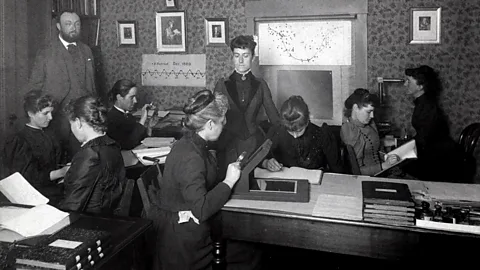 Alamy
AlamyAfter taking an interest in astronomy in her senior year, Leavitt got an apprenticeship at Harvard College Observatory in 1895, aged 27. At the time, a growing number of women like Leavitt were graduating with higher degrees, according to the historian Margaret Rossiter, who researched women’s roles in science at the turn of the 20th Century. They were still largely excluded from teaching at universities and leadership positions, but astronomy departments were only too happy to take them on to support their “big science” projects, which required large numbers of low-paid workers.
Leavitt was recruited by the director of the Harvard Observatory, Edward Pickering, who was leading a multi-decade project to photograph the entire night sky, and then classify and catalogue the spectra of its stars.
In line with 19th-Century gender roles, women were seen as ideal candidates for this classification work, which required patience and attention to detail – qualities that women were thought to embody naturally. Men, meanwhile, were thought to be more oriented toward leadership and the intellectual work of observation and theory.
Positions like Leavitt’s were typically low-paying and low-ranking, with little to no room for advancement. In these staff positions, women could apply their “feminine” skills without posing a threat to their male colleagues, in either prestige or pay.
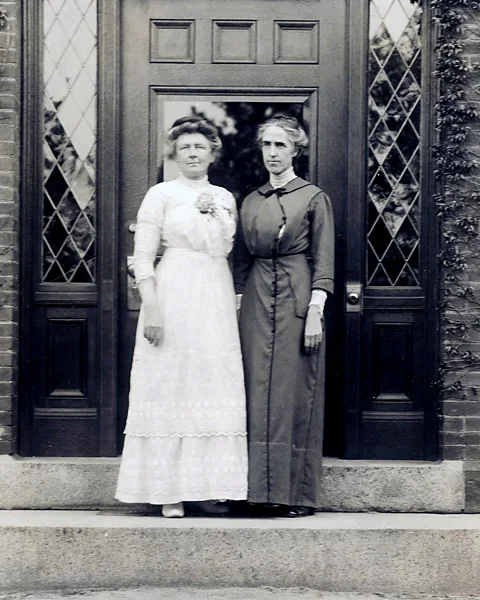 Alamy
AlamyIndeed, when Pickering decided to pack his staff with women, this is what he had in mind. “To attain the greatest efficiency, a skillful observer should never be obliged to spend time on what could be done equally well by an assistant at a much lower salary,” Pickering wrote in the 1898 Annual Report of the Harvard Observatory. He paid the computers 25 cents per hour, about $1,500 per annum, while the men of the Observatory made at least $2,500 annually.
Aside from Annie Jump Cannon, who joined the observatory the year after Leavitt, computers were not allowed to use the telescopes. Adjusting this equipment and capturing the photographs of the stars was carried out by men. Photographic glass plates were delivered to the “computer room” on the second floor of the east wing of the Observatory for analysis and calculation.
There, the women spent each day bent over the plates. They classified the stars’ spectra, measured their brightness, and catalogued their findings. The work was intense, taxing and repetitive.
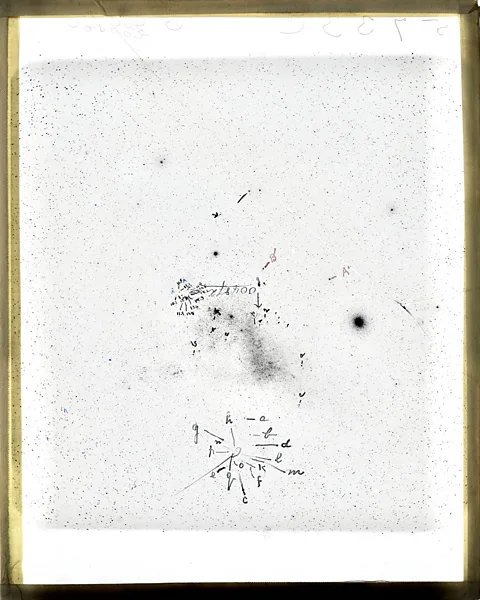 Harvard College Observatory
Harvard College ObservatoryWhen Leavitt took up her desk in the computer room, she was tasked with determining the magnitude (the measure of a star’s brightness) of variable stars in the north polar region from the glass plates alone. One reason the light of these stars fluctuates is because they are pulsating: compressing and releasing gas in a regular cycle. To know if a star varied, she would align two plates of the same patch of sky, one was a black-star negative and the other a positive. The stars would cancel each other out, except for those which varied in brightness. Leavitt didn’t know it yet, but the relationship between the pattern of variation and the star’s overall magnitude held the secret to gauging its distance from Earth.
Moving from star to star, and then plate to plate, Leavitt would judge the star’s brightness, compare it with the known magnitude of other stars, and record the results on the glass plate in her ledger. This process, over and over, is how Leavitt spent her days at the observatory.
After a year, Leavitt left the observatory in 1896 to travel in Europe and work as an art assistant at Beloit College in Wisconsin near her family home. But stars would eventually call her back again.
Leavitt did not leave behind any journals or diaries, and her correspondence tends more toward business and reveals few personal details. She clearly, however, was deeply invested in her work at the observatory. One astronomer described her as “absorbed in her work to an unusual degree”. And after being away for six years, she told Pickering herself how much she enjoyed and missed her work. “I am more sorry than I can tell you that the work I undertook with such delight, and carried to a certain point, with such keen pleasure, should be left uncompleted,” she wrote in a letter on 13 May 1902.
Leavitt was eager to take up astronomy again, and she asked Pickering if he could find her employment at the observatory or a school as an astronomy teacher. Her options for teaching were limited, however. For years, Leavitt had experienced increasing hearing loss, and her aurist would not permit her to observe the sky in the cold night air, thinking that the cold exacerbated the deafness. Somewhat perplexed that astronomy was thought to affect hearing and unable to name an observatory in a warm climate that would take her, Pickering offered her a paid job at the observatory at 30 cents per hour, five cents more than the other computers. Leavitt accepted and rejoined full-time in 1903.
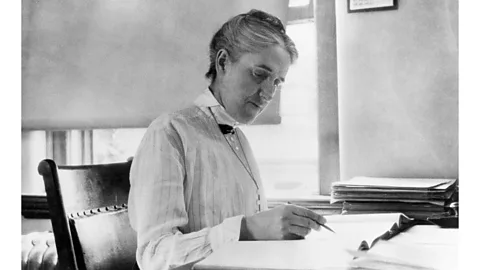 Alamy
AlamyShe picked up her work on variable stars once again. Pickering was interested in searching for variable stars in nebulous regions and had received a grant from the Carnegie Institution in 1903 to do so. But the Carnegie Institution did not renew their grant for 1904, and Williamina Fleming, a senior computer and curator of astronomical photographs, was forced to dismiss all computers but Leavitt. She would tackle the nebulous regions alone, and her first task was the Great Nebula in the constellation Orion.
She worked through 10 years’ worth of glass plates of the Orion Nebula and found 77 new variables there. She then moved on to the nebula in Sagittarius and the Small Magellanic Cloud. In the summer of 1905, Scientific American reported that “Miss Leavitt” had found 1,300 new variables since she began her solo work on nebulas in February 1904.
Through 1908, Leavitt continued to hunt variable stars in the Small Magellanic Cloud and the Large Magellanic Cloud. (At the time, astronomers didn’t know that both are small dwarf galaxies orbiting the Milky Way). She found 1,777 new variables in the Clouds and calculated their minimum and maximum brightness.
It was at this point that she saw a unique pattern. After cataloguing 16 new variables, she noticed that the brighter the star was, the longer it took to complete a full cycle of waxing and waning.
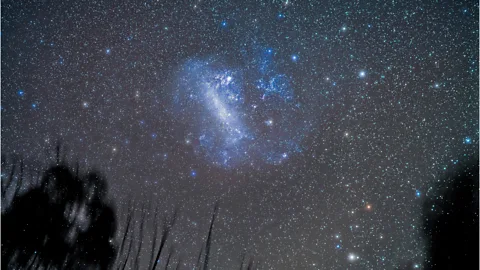 Getty Images
Getty ImagesThis observation would turn out to have far-reaching implications, but Leavitt did not linger on it, or what it could mean. She submitted her tables, and then took leave from the observatory for an illness that took a year to recover from. About the phenomenon, she merely noted in her report, “It is worthy of notice that… the brighter variables have the longer periods.”
Between illness and moving on to other assignments at the observatory, Leavitt still thought about her variable stars in the Magellanic Clouds, and she waded back into the Small Magellanic Cloud three years after her initial report.
Even though Leavitt did not know the exact distance between the Earth and the stars on her plates, she knew they were all roughly equally far away, as part of the Small Magellanic Cloud. This was an important inference to have made: it meant that the variation in their apparent waxing and waning had nothing to do with distance – the brighter stars did not appear brighter because they were closer, but because they intrinsically were. To confirm her suspicions, she charted the full variation cycles of eight more stars, and her conclusion was the same as three year prior: the brighter the star, the longer its period.
This time, Pickering noticed, and a few months later on 3 March 1912 he published Leavitt’s observation on the “remarkable relation” between brightness and period. What started as a promising trend had become a “law”, called the period-luminosity relationship.
Leavitt did not theorise about the implications of her new law, at least not in any record that remains, but many others would. Gradually, astronomers would realise it allowed them to measure the distance to stars sitting further away than ever before.
At the time, there was a limit to how far they could measure distance. If all stars were the same, they could have calculated their proximity by how bright they appeared, but their luminosity differs. For closer stars, they could apply techniques such as “stellar parallax”, which involves comparing the relative motion of stars, but beyond a certain point, it’s not possible.
Leavitt showed that her variable stars, called Cepheids, could tell astronomers their true luminosity over the course of their cycle, no matter how bright they appeared from Earth. So, if a distant galaxy contains a Cepheid – now known as a “standard candle” – astronomers can calculate its distance.
They do this in steps, called the “cosmic distance ladder”. First, they work out the distance to a standard candle close enough to use parallax, and calculate its luminosity. Then, assuming the standard candle farther away has the same pattern of luminosity, they can deduce its distance.
A decade after Leavitt published her law, Hubble turned his telescope to Andromeda and saw Leavitt’s candle burning bright in its fuzzy midst. When he spotted a Cepheid variable, he was able to calculate Andromeda’s distance from Earth with Leavitt’s law and prove that it lies far outside our Milky Way. Using the same method, he was soon able to find and measure 23 more galaxies, some of them up to 20 million light years away from Earth. With Leavitt’s law forming the foundation on which to build, Hubble also discovered in 1929 that the Universe is expanding.
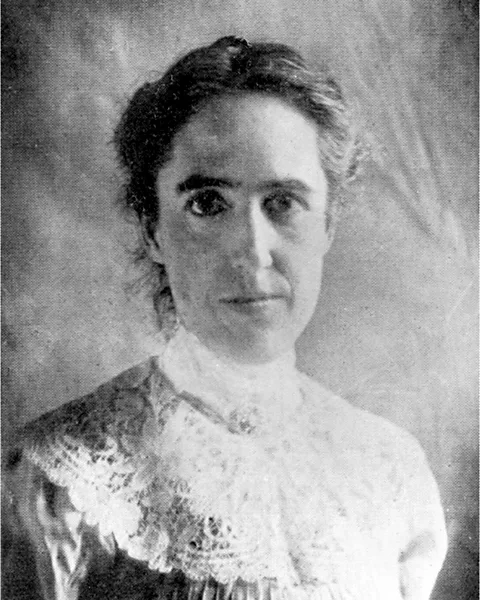 Alamy
Alamy“[Leavitt’s law] has become the basis for which we have measured distances, the galaxies, for over a hundred years now,” says Freedman. “You only had a two-dimensional picture of the sky and this gave a three-dimensional picture for the first time. You could actually measure that third dimension, how far away are the stars.”
Freedman herself relies heavily on Leavitt’s Cepheids in her own work. Before the Hubble Space Telescope launched in 1990, astronomers knew the Universe was expanding but didn’t know its exact size or age. Leavitt’s work once again provided a solution. Freedman led a project using the Hubble Space Telescope to take measurements using Cepheid variables, achieving a much higher level of accuracy.
With the ability to precisely measure the distance of variable stars, Freedman and her team settled decades of debate about the age of the Universe. “We found an age for the Universe of 13.7 billion years.”
Elegant in its simplicity – the brighter the magnitude, the longer the period – Leavitt’s law forever altered the way astronomers look at the cosmos. Unfortunately, Leavitt died of stomach cancer before she could see the full significance of her discovery. “One of the things I find saddest is that she died in 1921 and Hubble made his discovery of Cepheids in 1923, and then the discovery of the expansion in 1929,” Freedman says. “She never had a clue what the implications of her work were, which was enormous.”
While Leavitt did not live to see how she changed astronomy, those who came after her have not forgotten about her. Cecilia Payne-Gaposchkin, who carried on work in variable stars and discovered the composition of the Sun, worked at Leavitt’s old desk in 1923, and said of the woman she had never met: “I think she was the most brilliant of all the women [at Harvard].”
The light of Leavitt’s standard candles continues to illuminate astronomers’ way through the ever-expanding Universe. And to honour that, in 2008, members of the astronomical community, Freedman among them, voted to change the name of what was previously called the period-luminosity relationship to Leavitt’s law.
The history of science and discovery skews towards the stories of men. With this column, we instead celebrate the “missed geniuses”: individuals from diverse backgrounds who shaped our understanding of life and the Universe, and made the world what it is today.
Portrait of Henrietta Swan Leavitt by Emmanuel Lafont.
Source link





